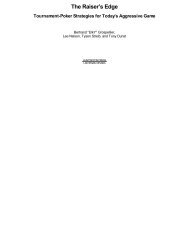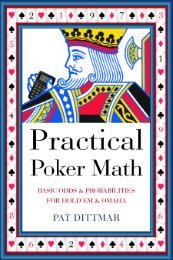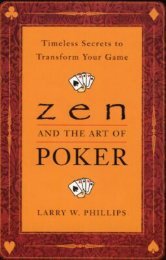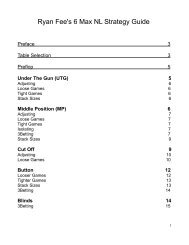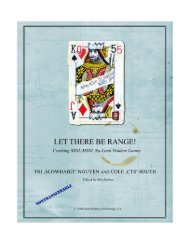Create successful ePaper yourself
Turn your PDF publications into a flip-book with our unique Google optimized e-Paper software.
You end up getting all-in on the flop. If we look at your outs<br />
here, you need to get either a 4 or 5 on the turn or river to make<br />
two pair and beat his pair of Ks. There are three 5s left, and two<br />
4s left. This gives you five outs. If you were playing on TV,<br />
they would put 18% next to your hand. Your opponent would<br />
have the remaining 82%. I’ll show you how to get these<br />
percentages in the next section; however, for now, I just want to<br />
show you the impact of a backdoor flush draw. Now, instead of<br />
the board being K94 with the 9♦, let’s change it to K94 with the<br />
9♠. This is the same suit as our two cards.<br />
Hero: 4♠5♠<br />
Villain: A♣K♦<br />
Board: K♥9♠4♣<br />
Now, if the turn and river are both spades, you would have a<br />
flush. This is a chance for improvement you didn’t have when<br />
there was no spade on the flop. If this were on TV, you would<br />
have 22% and your opponent would have 78%. This is about a<br />
4% increase for you.<br />
Another backdoor draw is a backdoor straight draw. Let's look<br />
at this example.<br />
Hero: 6♠7♠<br />
Villain: A♣K♦<br />
Board: K♥2♦6♣<br />
37<br />
Again, if you were to get all-in here, you need a 6 or 7 either on<br />
the turn or river. This is a total of five outs, and you again would<br />
have 18% next to your hand, and your opponent would have<br />
82%. However, let's change the board (changing the 2♦ to a 5♦).





